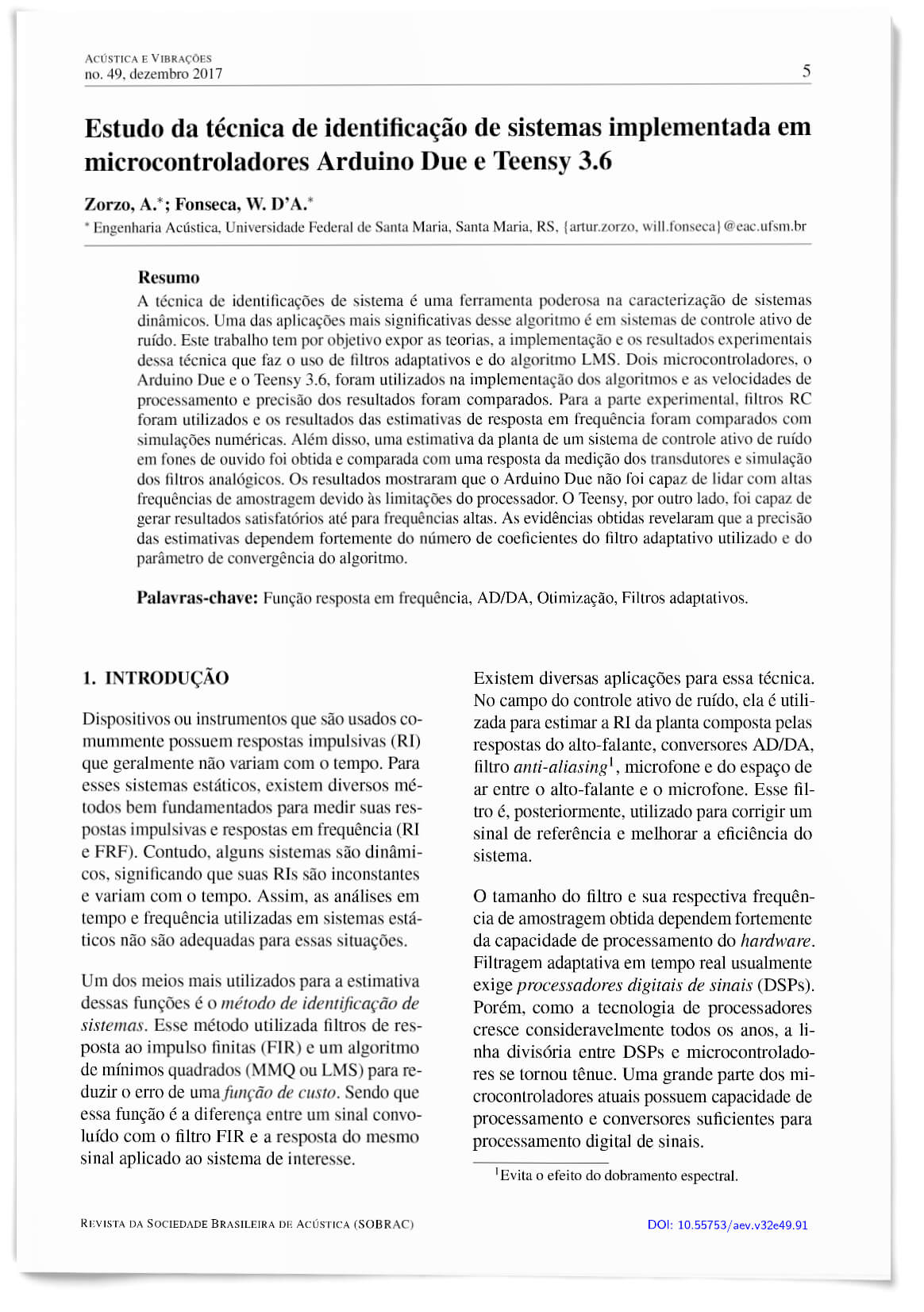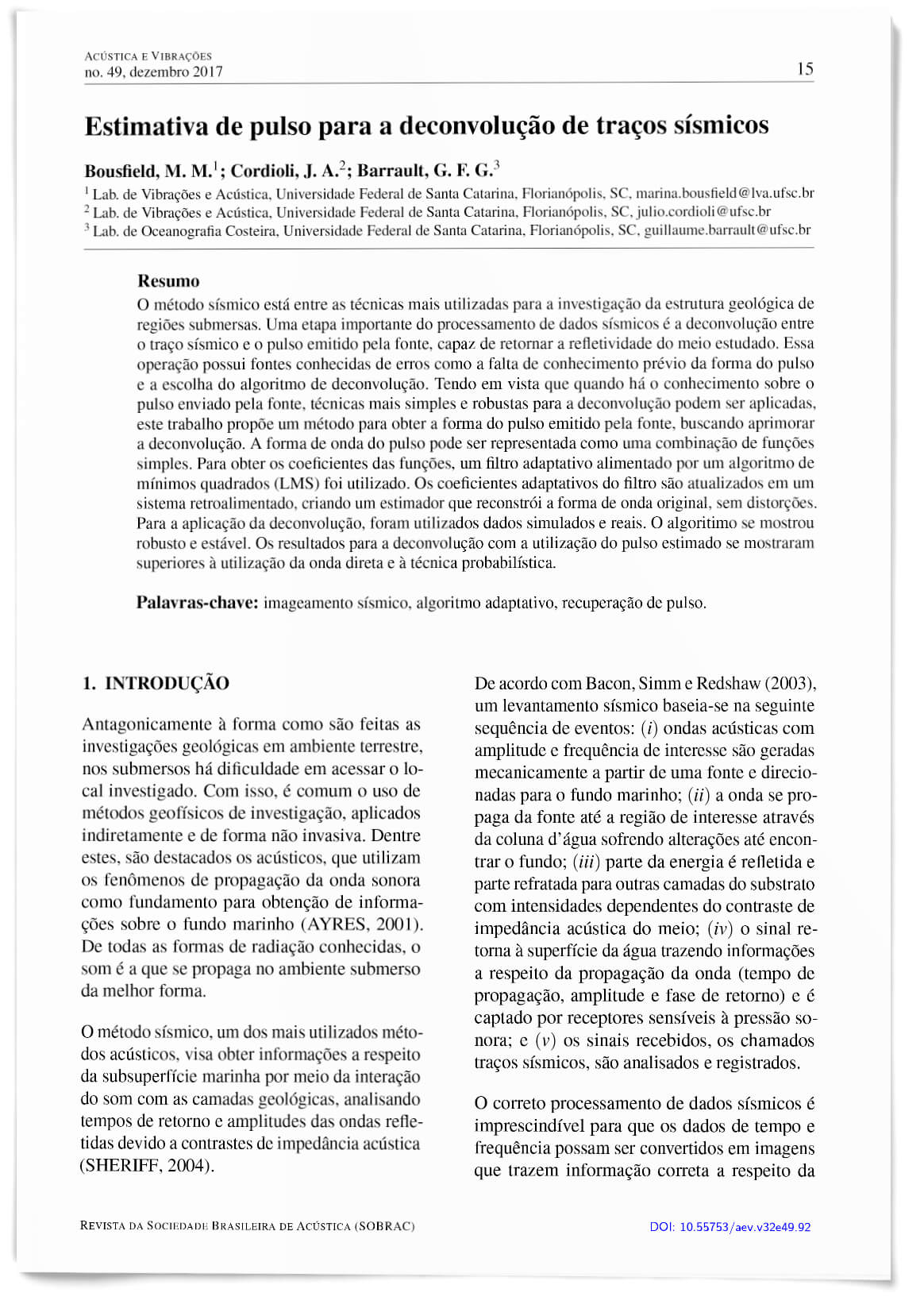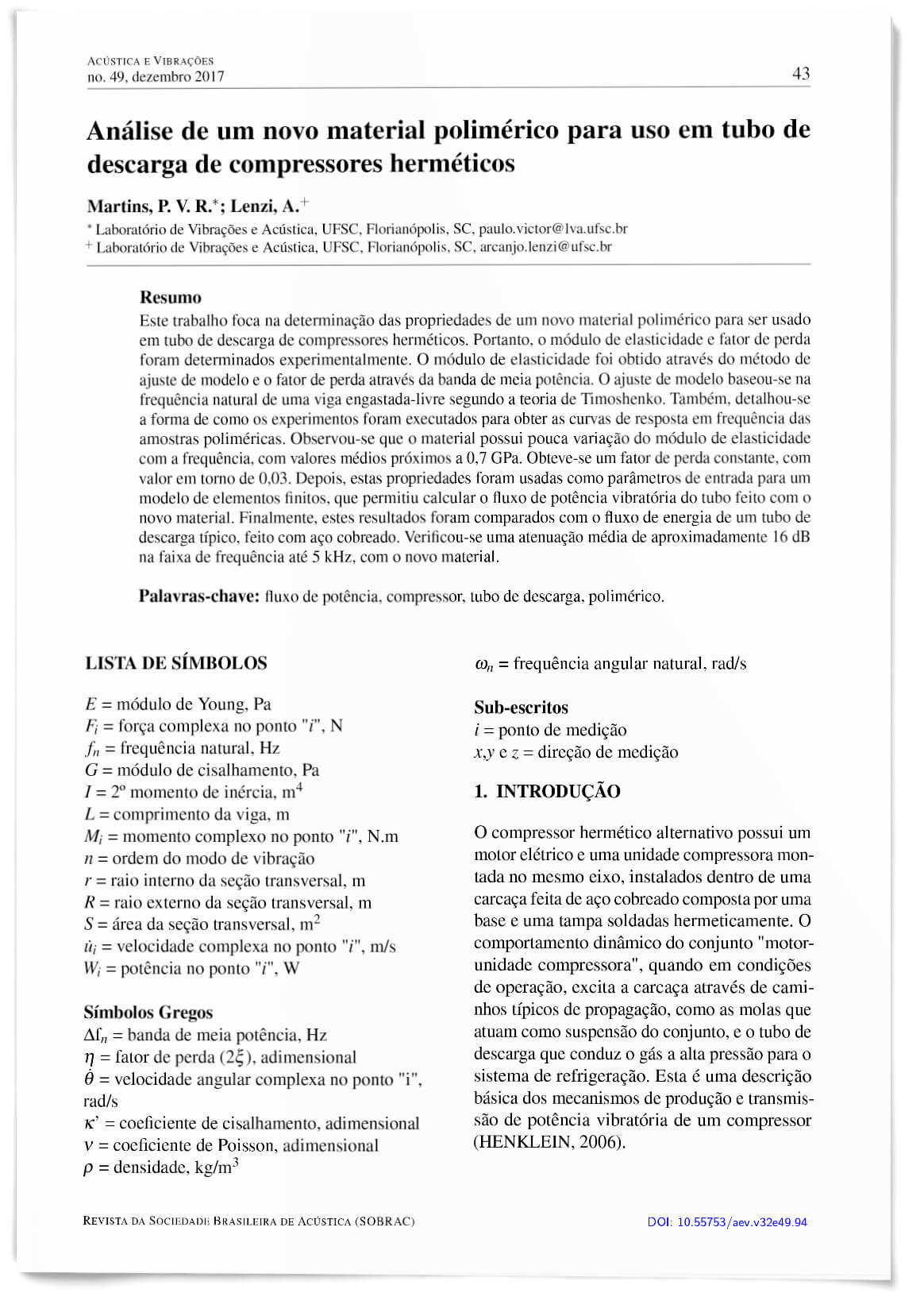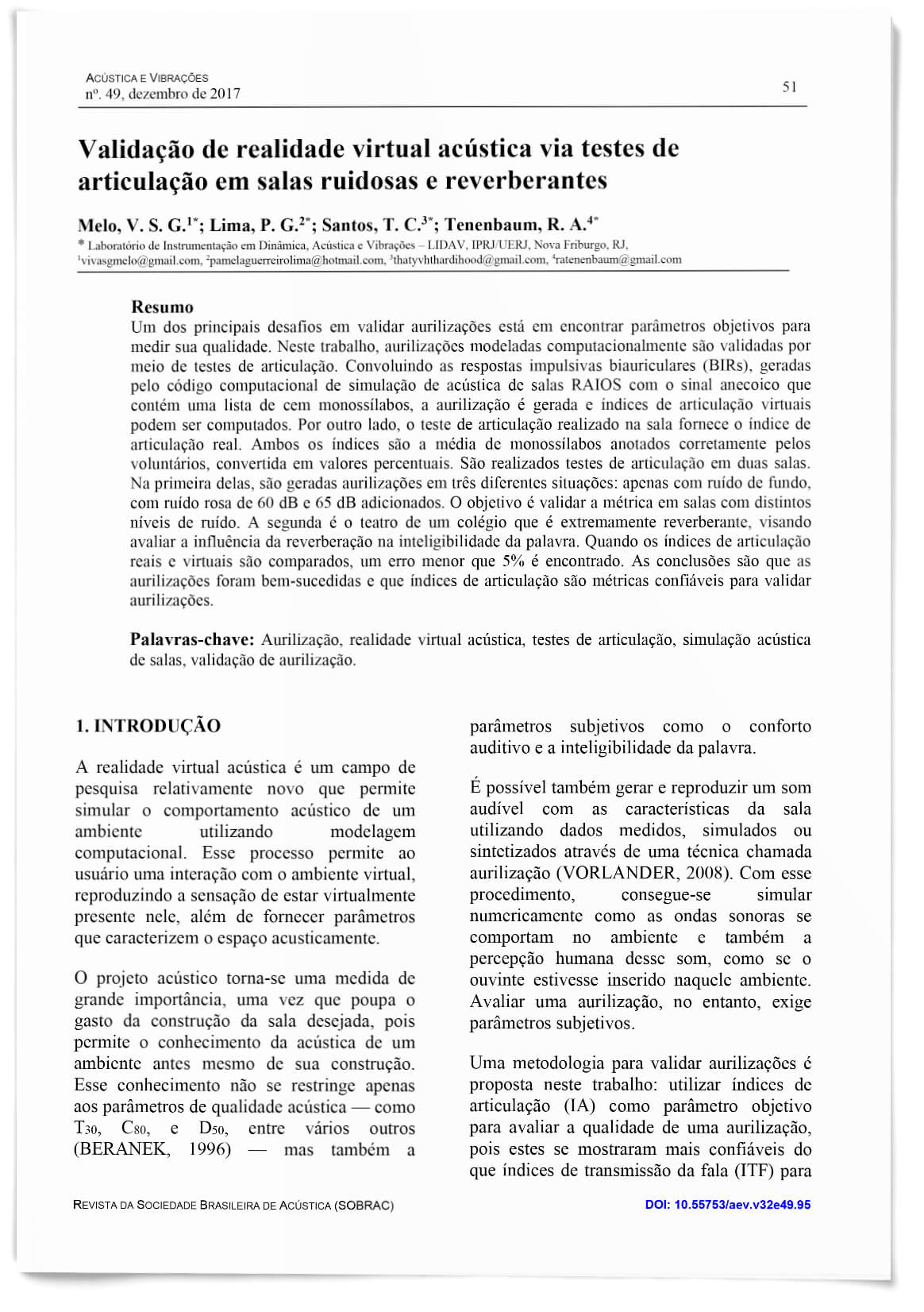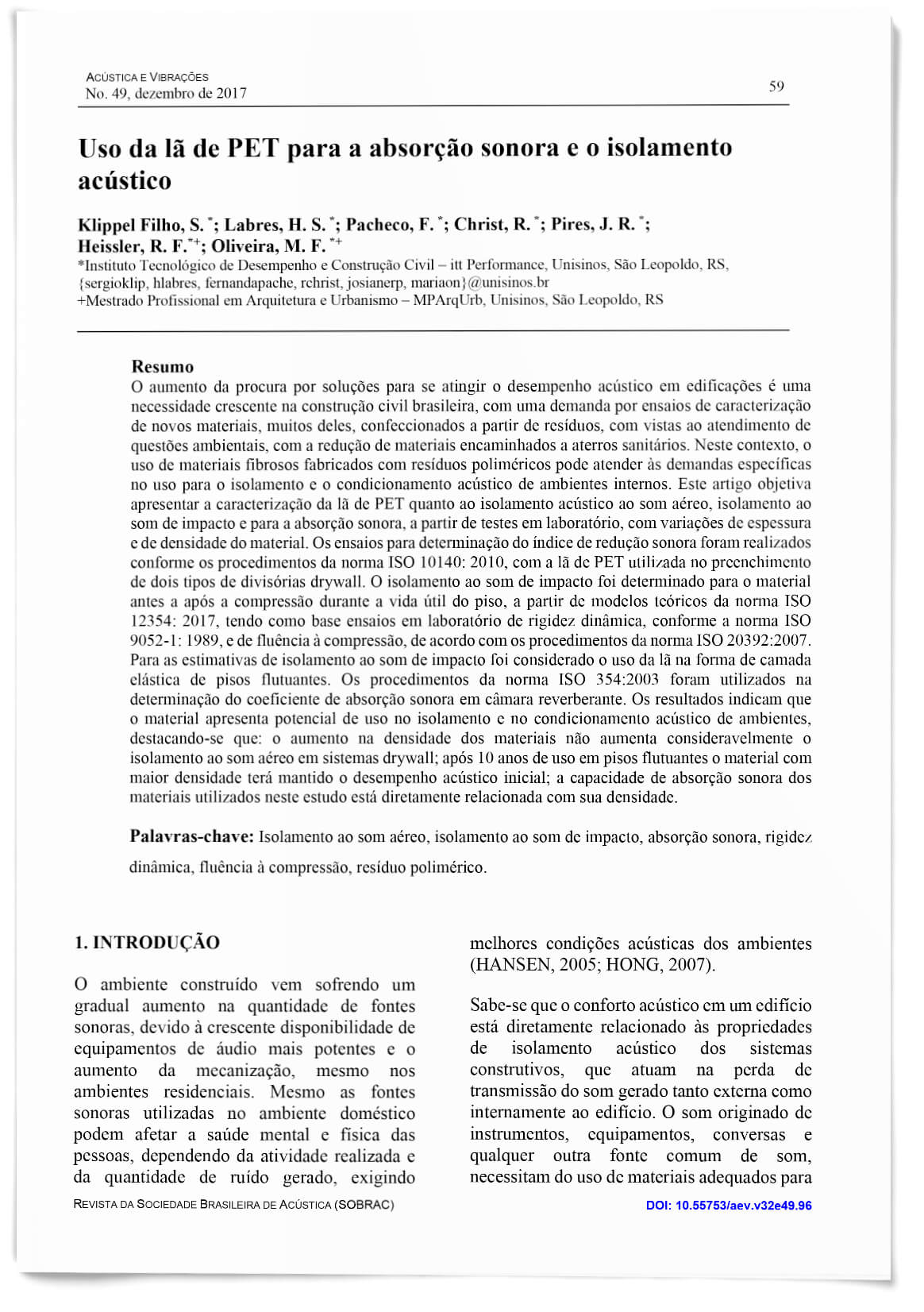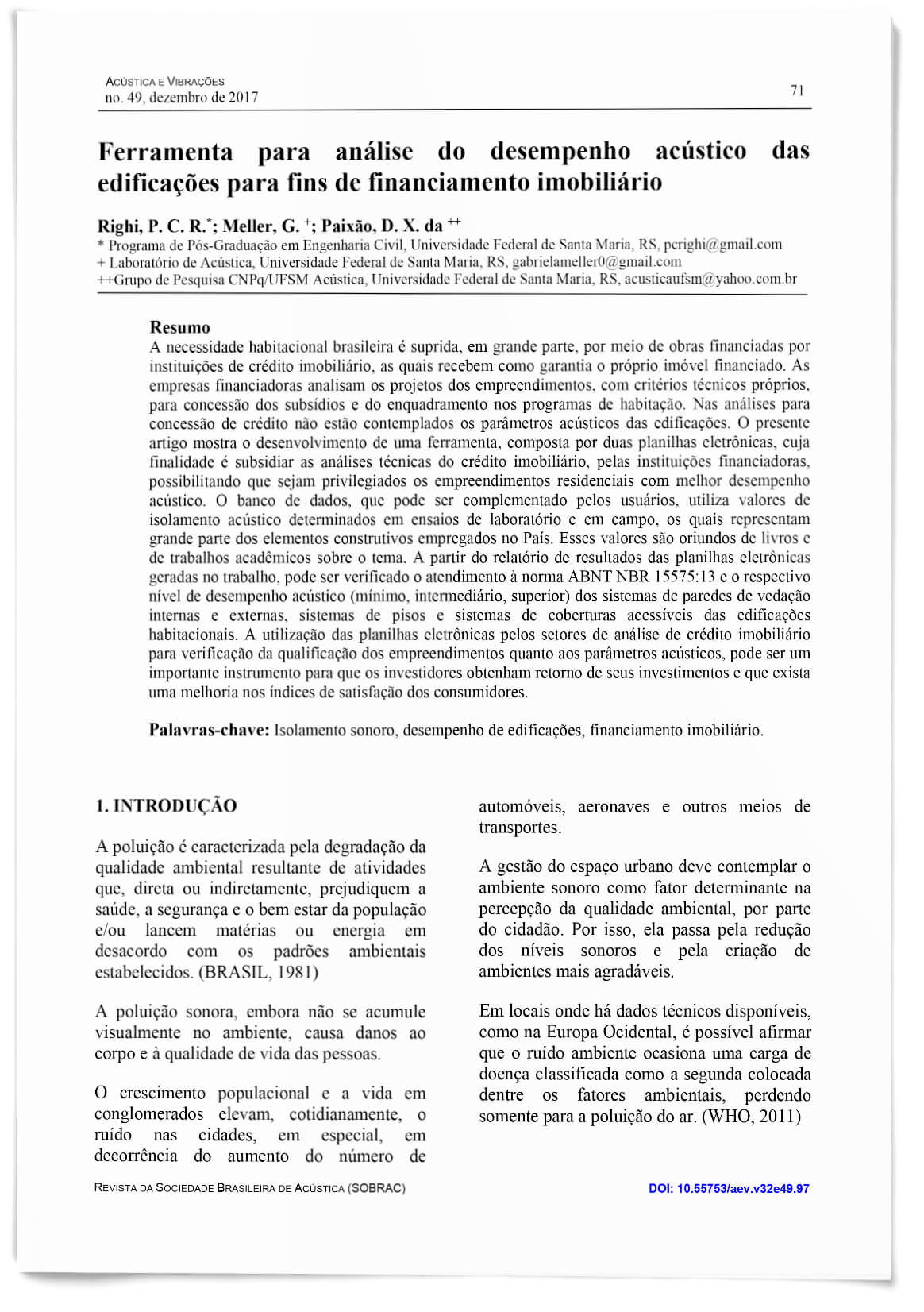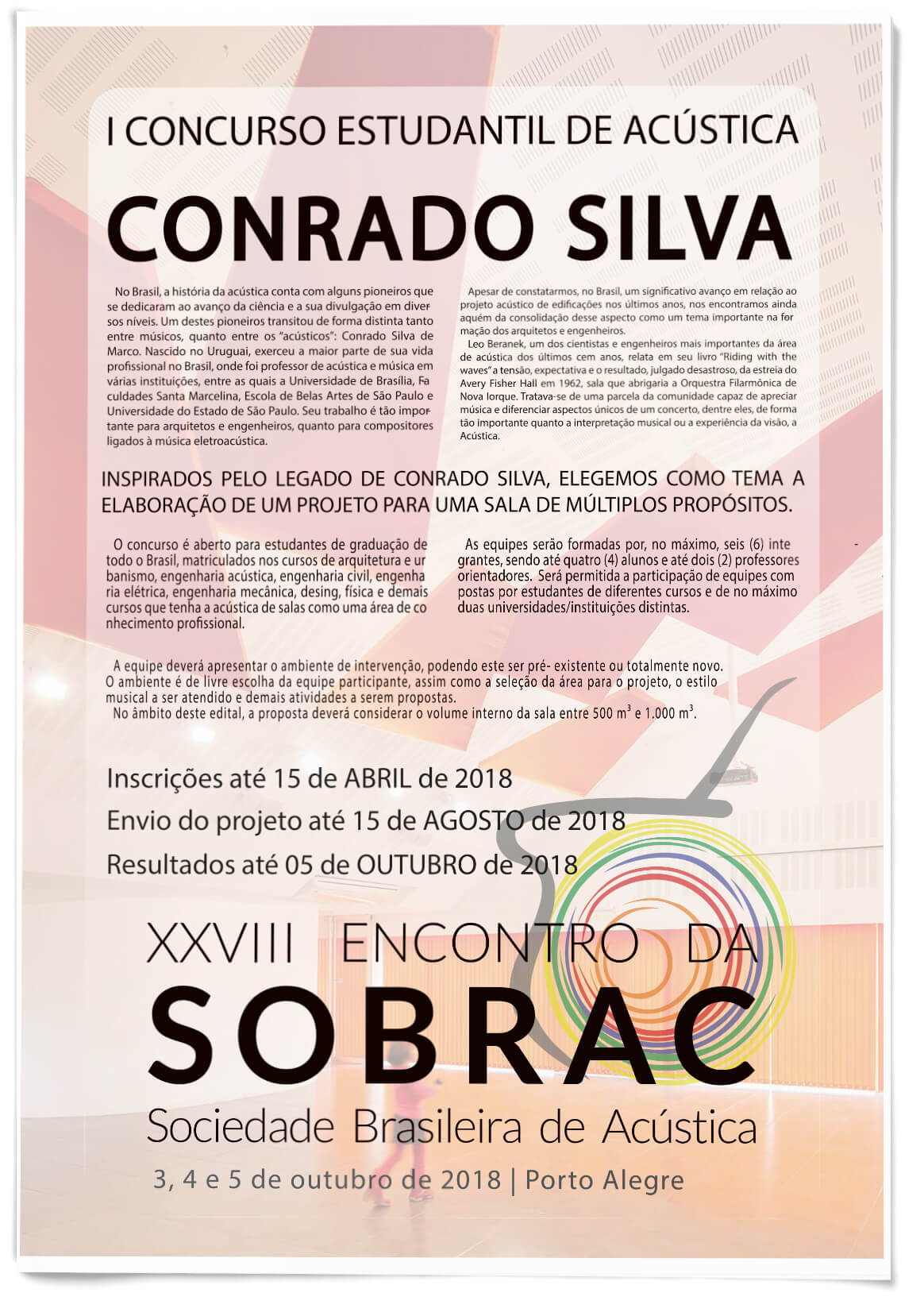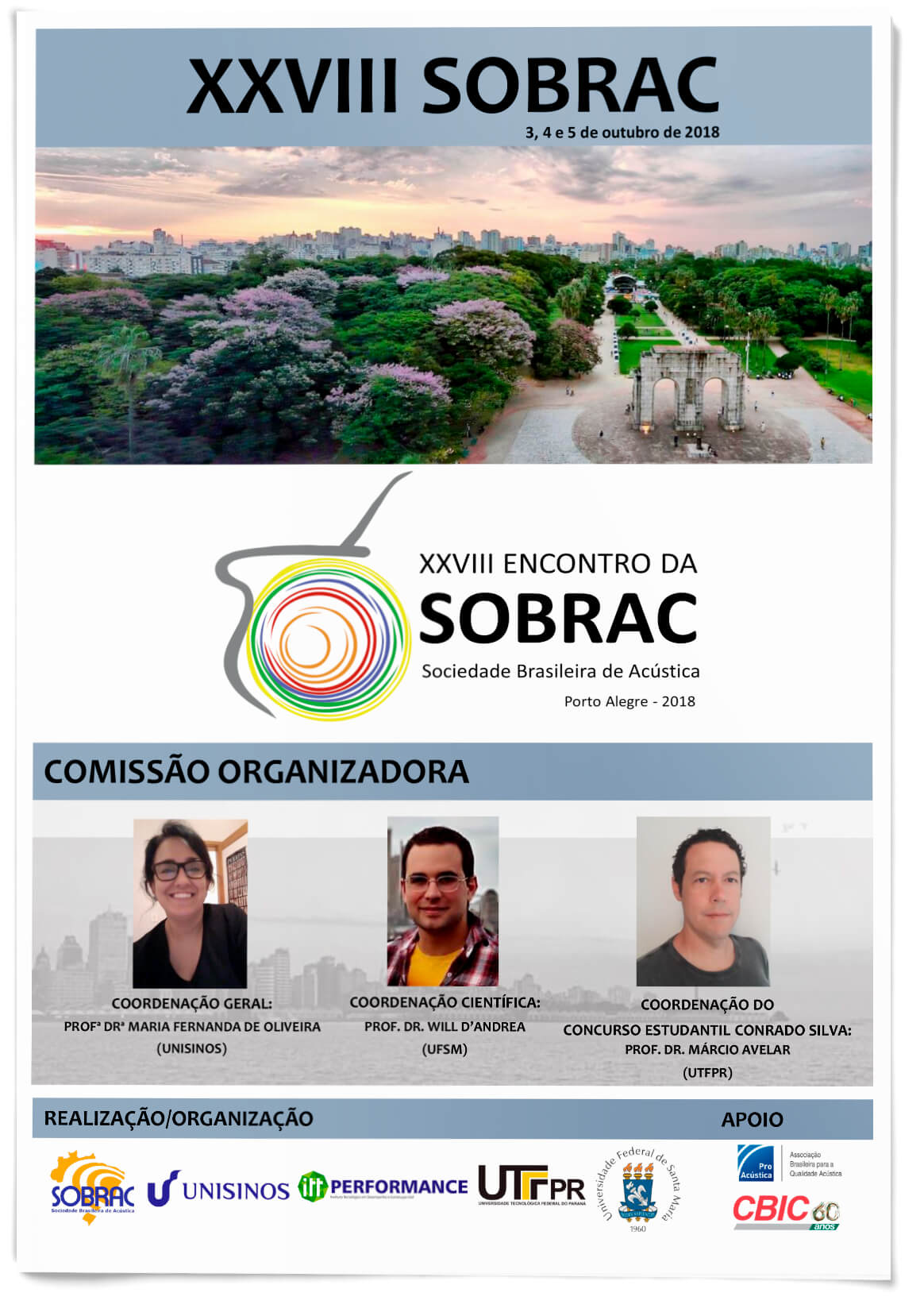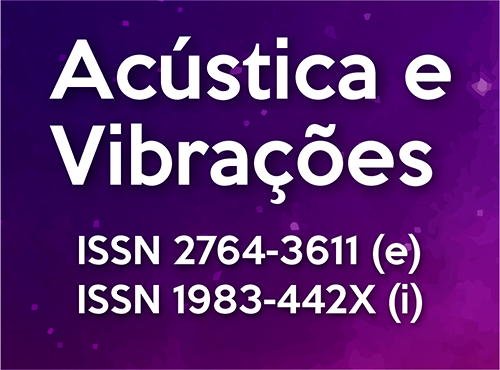Vol. 32 No. 49 (2017): Acústica e Vibrações 49
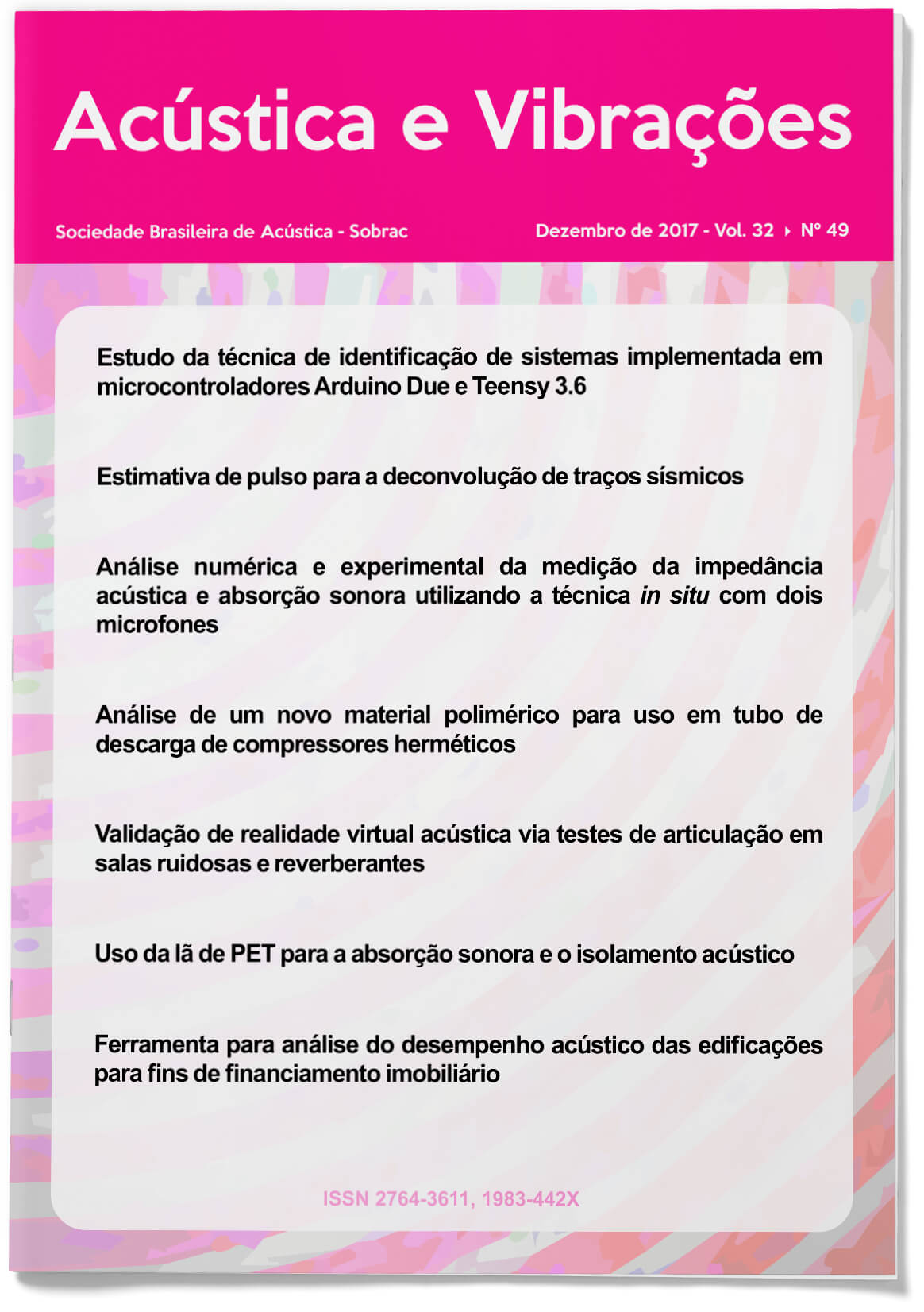
Editorial
The Editorial Committee of Revista Acústica e Vibrações presents Issue n°49. This issue has seven articles covering subjects related to signal processing applied to the technique of system identification and seismic trace deconvolution; numerical and experimental analysis of the measurement of acoustic impedance and sound absorption; determination of mechanical properties for noise control; acoustic virtual reality and building acoustics.
The edition begins with a work that addresses aspects such as: signal post-processing, filters, active control and instrumentation. All this aimed at implementing the system identification technique on relatively low cost AD/DA-DSP platforms such as Arduino. In the work, mathematical optimization tools are used together with filtering techniques. The approach is theoretical-practical and the hardware implementation is conducted and tested under both headphone and headphone conditions. The discussion is fruitful regarding the difficulties and limitations of the chosen platforms.
The second article addresses the issue of seismic imaging from signal post-processing methods, using and discussing aspects of the deconvolution between the seismic trace and the pulse emitted by the source. Furthermore, a least squares algorithm is used in conjunction with an adaptive filter to recover the original signal. The theory is previously presented and there are relevant discussions in simulated and real data, showing the effectiveness of the techniques.
Subsequently, there is a work that combines experimental and numerical aspects. The topic is the measurement of acoustic impedance and sound absorption in situ, using the technique of two microphones (or PP probe). Furthermore, a modeling is presented for comparative purposes using the Finite Element Method. The approaches are put into practice for some specific samples/cases, clarifying details and limitations inherent to the methodologies.
The following article proposes a constructive change in hermetic compressors used in refrigerators capable of contributing significantly to the reduction of noise in an environment. It is a great example related to engineering practice, which combines knowledge of solid mechanics, vibrations, acoustics and numerical methods applied to noise control in the sound source. The reader will be pleased to read about the use of a Timoshenko beam model applied to the experimental survey of parameters that are used in the finite element modeling of the compressor, which is used to measure the expected reduction in vibratory power of this refrigerator component.
An approach to the evaluation of the quality of an aurilization (or auralization) is the subject of the article “Validation of acoustic virtual reality via articulation tests in noisy and reverberant rooms”. This work is an evolution of the one presented in our previous edition, now in situations where both reverberation and background noise are greater. Results obtained by carrying out the tests in two rooms were compared with those obtained from the computer simulation of these environments.
To close the articles section, we bring two works related to building acoustics. The first one presents a characterization of materials in which its main component is PET wool in terms of air and impact insulation, as well as the sound absorption coefficient. The maintenance of their properties over the years and use was also evaluated, according to a standardized procedure. In addition to a promising result obtained from the reuse of waste, we highlight the clear presentation of the procedures described in the most current standards.
The second of these articles presents the creation of a database that provides information on aerial and impact sound insulation for different types of national building elements, something urgent and essential to make the designer's work more efficient. Such a database is presented in the form of an electronic spreadsheet that can be fed by its users with experimental data obtained both in laboratories and in the field. In addition to enabling the cataloging of this data, models for estimating isolation in specific situations were programmed and facilitate the use of the tool for prior assessments, which can be used by real estate financing agencies.
We close this edition with the presentation of a novelty: the I Conrado Silva Student Contest, whose regulation can be read in this volume. This initiative aims to increase the visibility and encourage the involvement of students from different courses with Acoustics. The contest is part of the activities related to the XXVIII SOBRAC Meeting, to be held in October 2018 in Porto Alegre, an event to which we are pleased to invite you!
The editors of Revista Acústica e Vibrações – issue n.49 – thank to the SOBRAC Board of Directors for the invitation, to the authors and to the group of reviewers, whose work was essential to make this publication a reality.
Sincerely,
Prof. Dr. William D'Andrea Fonseca
Prof. Dr. Dinara Xavier da Paixão
Prof. Dr. Marcio Henrique de Avelar Gomes
Summary content:
- Study of the system identification technique implemented in Arduino Due and Teensy 3.6 microcontrollers;
- Pulse estimation for the deconvolution of seismic traces;
- Numerical and experimental analysis of the measurement of acoustic impedance and sound absorption using the in situ technique with two microphones;
- Analysis of a new polymeric material for use in the discharge tube of hermetic compressors;
- Validation of acoustic virtual reality via articulation tests in noisy and reverberant rooms;
- Use of PET wool for sound absorption and acoustic insulation; and
- Tool for analyzing the acoustic performance of buildings for real estate financing purposes.

